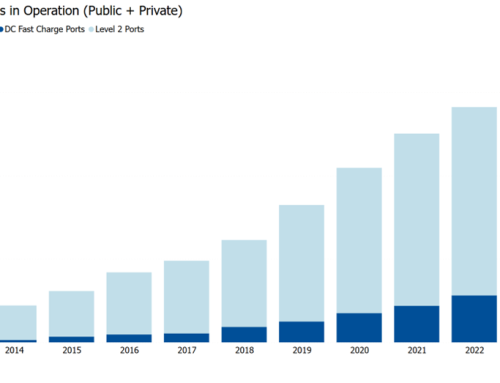
Source: EV Market Dashboard
First and foremost, we recently updated the data source for our EV Market Dashboard from S&P Global to Experian. After several years of using data from S&P Global, we were no longer able to use the data in a way that we felt would be most valuable to our users and made the difficult decision to seek out a new vendor for this vital data. With Experian as our new vendor for vehicle purchase data, we’re happy to say that EV Hub users can once again download data directly from charts in the EV Market Dashboard. We expect all users to continue to abide by the terms and conditions of the EV Hub User License Agreement.
Due to small variations in vehicle classifications, some historical data may be slightly different. If you notice any issues or have questions or concerns about the data, please reach out to info@atlasevhub.com.
As we worked through contract negotiations, we had to pause updates to our sales data. We now have vehicle purchase data available through August and will once again update it on a monthly basis. With the data gap filled, we are able to examine and wrap up sales stories for the second quarter (Q2) of 2024.
In Q2, light-duty electric vehicle (EV) sales reached nearly 363,000, with battery electric vehicles (BEVs) making up a record 79 percent of this total, around 288,000 sales. In addition, EVs represented a 9.9 percent share of the overall light-duty vehicle market for the quarter. Below are three sales data stories from Q2.
Tesla, a long-time EV market leader, saw its sales climb back in Q2 after a challenging start to the year. In Q1, Tesla sales reached an all-time low with only 135,000 vehicles sold. However, they rebounded to nearly 152,000 in Q2, with the Model Y making up the majority at 110,000, followed by the Model 3 with 34,000. Although Tesla’s sales declined this year, other automakers made notable gains in the EV space. Non-Tesla automakers collectively saw a 24 percent increase in EV sales this quarter compared to Q2 2023, suggesting that the market is evolving as more players become competitive and consumers are drawn to more EV options.
Despite fluctuations in sales, Tesla continues to expand its manufacturing reach, recently producing its one-millionth Model Y at the Fremont factory. The company is also making international strides, having started EV production in Germany for export to India in April. Moreover, Tesla is reportedly considering a $2 billion investment in a new facility in India.
Next, Toyota set a record for its sales in Q2, selling nearly 23,000 light-duty EVs, a remarkable 101 percent increase from the quarter before, which saw nearly 11,000 sales. Leading Toyota’s sales were the RAV4 Prime, with around 9,000 sales, and the BZ4X, which added another nearly 7,000. Toyota’s commitment to the EV market is further evidenced by its ongoing investments in U.S. production facilities. In April 2024, the company announced a $1.4 billion investment in its Princeton, Indiana facility to produce a new three-row battery electric SUV and to add a lithium-ion battery pack assembly line. The investment will create up to 340 new jobs. Despite these prominent strides, however, Toyota recently adjusted its U.S. EV production timeline, now planning to start in 2026.
Meanwhile, automakers traditionally focused on gas-powered vehicles are steadily gaining ground in the EV sector. Mazda, for example, reported a substantial 303 percent increase in Q2 sales, growing from 1,200 in Q2 2023 to 4,700 in Q2 2024, indicating its impact in the market. Nissan also experienced impressive growth, achieving 7,500 light-duty EV sales in Q2—a 75 percent jump from the previous year. Collectively, these developments indicate an increasingly competitive EV market, with both established automakers and new companies working to meet the rising demand for EVs.
For a deep dive on the sales data, visit our EV Market Dashboard, which now has data through August 2024.


